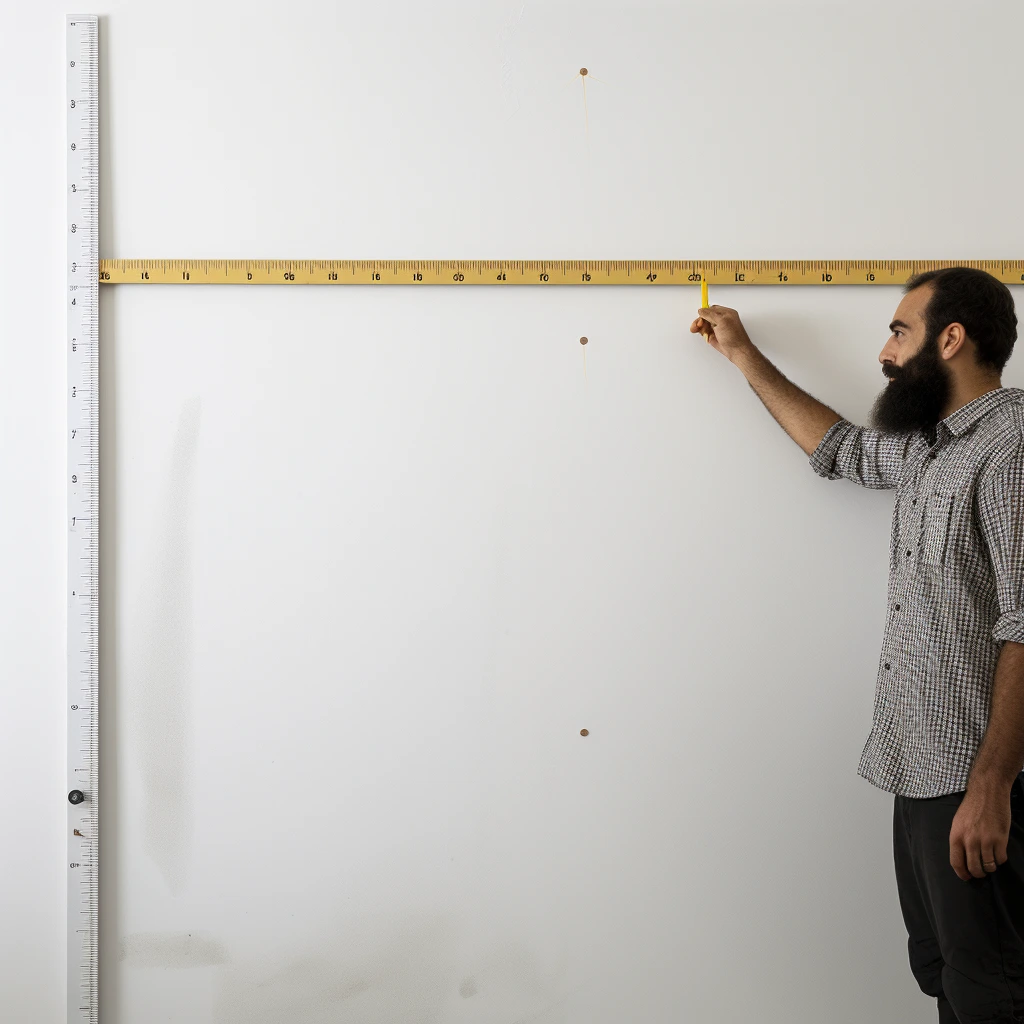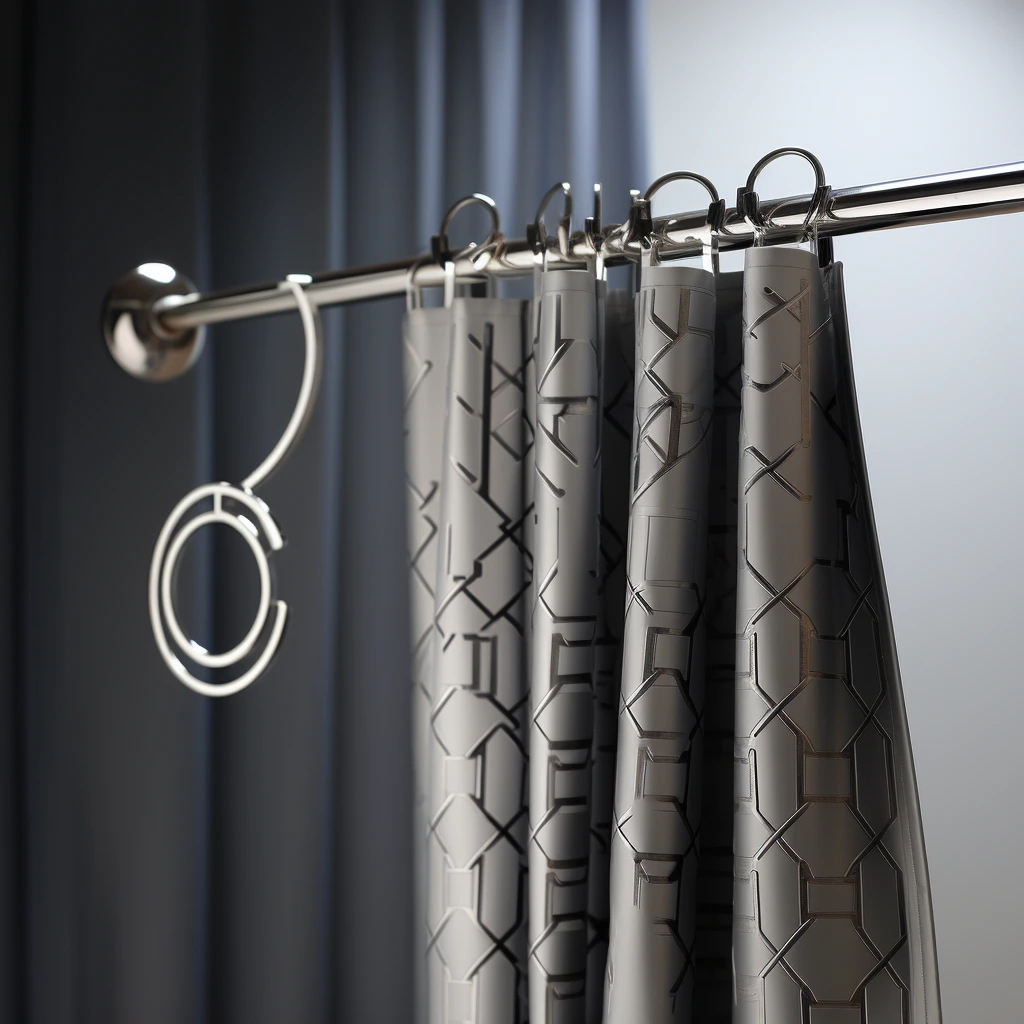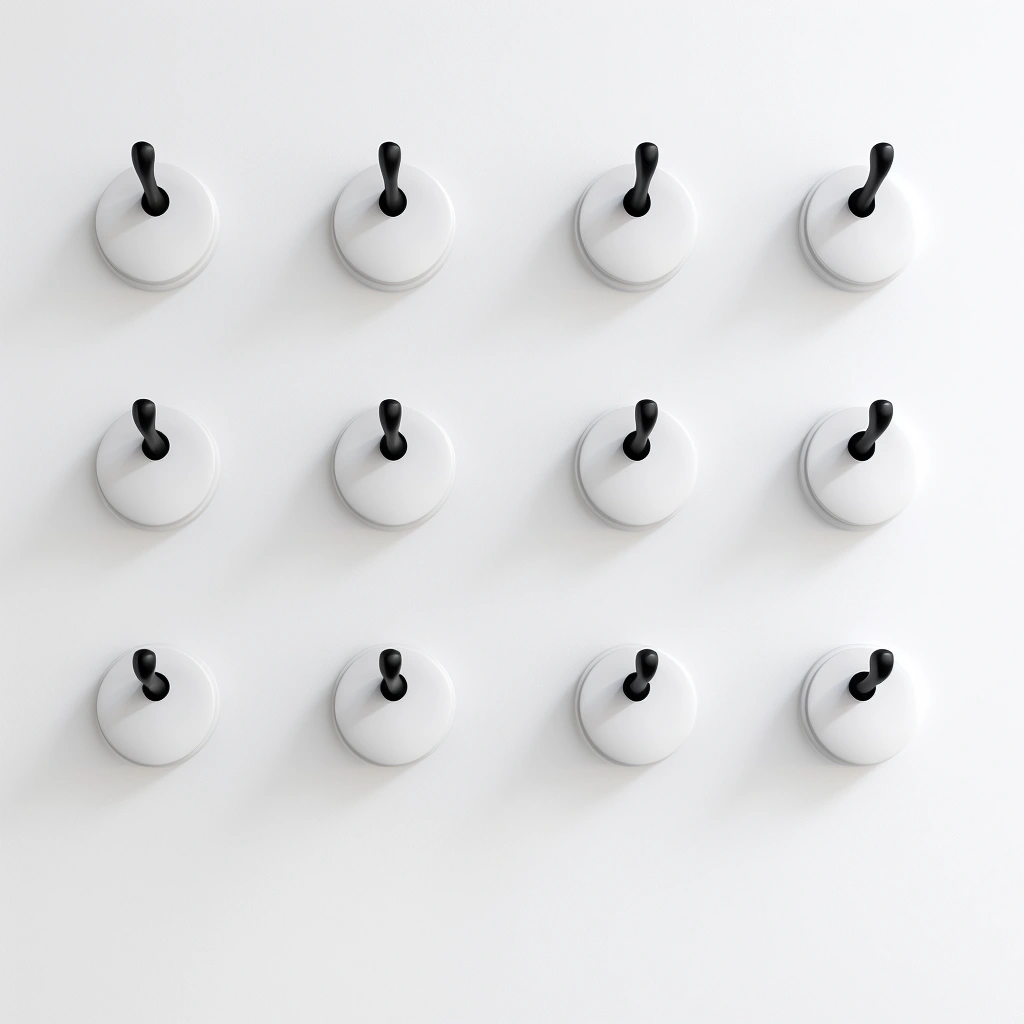3 Easy Steps: How to Hang a Shower Curtain for a Stunning Bathroom Makeover
A shower curtain may seem like a simple addition to your bathroom, but its correct installation can significantly impact your space’s functionality and aesthetics. Whether replacing an old curtain, giving your bathroom a facelift, or just moving into a new home, hanging a shower curtain is a straightforward DIY project that anyone can tackle with the right tools and guidance.
In this article, we’ll provide a step-by-step guide on how to hang a shower curtain. We’ll cover various methods, from traditional rod installations to no-drill options, ensuring you can choose the one that suits your needs and preferences.
Table of Contents
Measuring and Marking for the Curtain Rod
Measuring and marking the curtain rod is critical in hanging a shower curtain. This step ensures that the curtain will be aesthetically pleasing and functional in preventing water from splashing outside the shower or bathtub area. Here’s a breakdown of the steps involved:
Determine the Correct Placement for the Curtain Rod.
The first task is to measure the width of your shower or bathtub area. To do this, follow these steps:
- To understand how to hang a shower curtain effectively, use a tape measure or a ruler to measure the distance between the two walls where you intend to hang the shower curtain.
- Measure from the inner edges of these walls to ensure the curtain rod fits within the space.
- When measuring, adding a few extra inches to the total width is a good idea. This extension on both sides will ensure that the curtain effectively contains water and prevent it from spilling out while you shower.
- Ensure that your curtain rod extends beyond the measured width. This prevents water from escaping the designated shower area. For example, if the width of your shower is 60 inches, select a curtain rod that extends to around 62-63 inches.

Use a Level for Accuracy.
It would help if you used a level to ensure the curtain rod is installed perfectly horizontally. A level is a tool with a bubble indicator that helps you determine whether a surface is even. Here’s how to use it:
- Place the level horizontally on the wall where you plan to install the curtain rod. Position it at the height you’ve chosen for the rod.
- Adjust the level until the bubble indicator is centered within the designated lines. This means that the level is perfectly horizontal.
- Using a level is a crucial step in ensuring that the curtain rod will be installed straight and level, which is essential for the curtain to hang evenly and look aesthetically pleasing. This technique is a fundamental aspect of how to hang a shower curtain properly.
Mark the Spots for Drilling
Once you’ve measured the width and ensured the level position is accurate, you’ll mark the spots for drilling. These marks will be your reference points for attaching the curtain rod brackets to the wall. Here’s how to do it:
- Using a pencil, mark the wall at the desired height where the curtain rod brackets will be attached. Typically, this height is a few inches above the top edge of the shower or bathtub.
- Ensure that you have two marks, one for each bracket. These marks should be aligned horizontally and level to ensure the rod is installed evenly.
- The distance between these marks should match the width you measured earlier to accommodate the curtain rod. Getting the positioning right is crucial to avoid any issues during the installation.
Measuring and marking the curtain rod is the foundation of a successful shower curtain installation. It ensures that the curtain rod has the correct width to contain water and is installed evenly and level, enhancing both functionality and aesthetics. Proper measurement and marking will set the stage for the rest of the installation process, ensuring your shower curtain performs its job effectively and looks great in your bathroom.
Hanging a Shower Curtain with Hooks
Now that you’ve prepared your wall, it’s time to hang the shower curtain. Here’s how to do it using hooks:
- Select the right curtain and hooks: Ensure you have a shower curtain that suits your style and space. Additionally, choose shower curtain hooks that match your décor and are strong enough to support the curtain’s weight.
- Thread the hooks through the curtain and liner: Slide the hooks through both the shower curtain and the liner. The liner is essential to prevent water from splashing outside the shower area.
- Hang the curtain on the hooks: Insert the hooks into the pre-drilled holes and secure the curtain in place. Make sure the curtain hangs evenly and smoothly.
Using a Tension Rod for Hassle-free Installation
For a more straightforward and no-drill installation, consider using a tension rod. Here’s how to do it:
- Extend the rod to fit between the walls of the shower/tub: Twist the tension rod to expand it to the desired width, ensuring it fits securely between the shower or tub walls.
- Adjust and secure the tension in place: Apply pressure to the shower curtain rod to create tension between the walls. Once it’s secure, your shower curtain is ready to be hung on the rod. Follow the steps mentioned in the previous section for selecting the right curtain and liner.

Alternative Methods for How to Hang a Shower Curtain
Alternative methods for how to hang a shower curtain offer creative and convenient options beyond traditional rod and tension rod installations. Here’s an explanation of these alternatives:
Installing a Ceiling-Mounted Rod
Ceiling-mounted rods provide a distinctive and elegant solution for how to hang a shower curtain. This method involves suspending the curtain from the ceiling rather than attaching it to the walls. Here’s how it works:
- Unique and elegant look: By hanging the curtain from the ceiling, you create a striking visual effect in your bathroom. It can make the space feel more open and luxurious, as the curtain can cascade from above, emphasizing the room’s height.
- Installation process: To install a ceiling-mounted rod, you’ll need to screw hooks or brackets into the ceiling at the desired positions. Then, attach the curtain rod to these hooks. Ensure the curtain is long enough to reach the floor or tub, and be mindful of the spacing to ensure the curtain hangs evenly.
Using Adhesive Hooks or Rings

Adhesive hooks and rings are excellent options for those who want to avoid drilling holes in their bathroom walls. These are ideal for renters and anyone looking for a hassle-free installation method:
- No drilling required: Adhesive hooks and rings are affixed to the shower tiles or bathroom wall using strong adhesive. This means there’s no need to drill holes, making them perfect for people concerned about wall damage or living in rental properties with modification restrictions.
- Ease of installation: Clean the surface where you intend to attach the hooks or rings, peel off the backing from the adhesive, and press them onto the wall. Once they’re securely in place, you can easily hang your curtain.
Opting For No-Drill Options
No-drill options are perfect for those seeking quick and easy installation methods. Here are a couple of popular no-drill alternatives:
- Spring-loaded curtain rods: These rods rely on tension to stay in place. To install, you extend the rod to fit between the walls of the shower or bathtub, applying pressure to create tension. The curtain is then hung on the rod, and the tension secures.
- Magnetic curtain holders: Magnetic curtain holders consist of two parts – one attaches to the wall or tiles and the other to the curtain itself. These magnetic components hold the curtain in place, eliminating the need for screws, nails, or adhesive.
These alternatives are convenient and versatile, providing different styles and installation methods to suit various preferences and bathroom layouts. Whether you’re looking for an elegant ceiling-mounted rod, adhesive hooks for a drill-free solution, or no-drill options like spring-loaded rods and magnetic holders, you can find the perfect choice to enhance your bathroom decor and functionality.
Tips for a Successful Shower Curtain Installation

To install a shower curtain successful, consider the following tips:
- Use waterproof materials and hooks: Opt for curtains, liners, and hooks to prevent mold and mildew growth.
- Consider using a shower liner: A shower liner is an additional layer of protection that keeps water from escaping and extends your curtain’s life.
- Double-check measurements and levels: Measure twice and level twice to ensure the curtain hangs correctly and looks aesthetically pleasing.
Common Mistakes to Avoid
Avoiding common mistakes during your shower curtain installation is essential to ensure that the curtain functions effectively and looks great in your bathroom. Here’s an explanation of the common mistakes to steer clear of:
Improper Measuring and Marking
Incorrect measurements can lead to various issues with your shower curtain installation. When measuring and marking for the curtain rod, accuracy is critical. Measuring mistakes can result in the following problems:
- Curtain length: If you measure the width of your shower or bathtub area correctly, you may end up with a curtain that needs longer or longer. A curtain that is too short may not effectively contain water during showers, leading to water spillage. Conversely, a curtain that is too long can look awkward and may drag on the floor, leading to quicker wear and tear.
- Uneven installation: Incorrect measurements can also lead to an uneven installation. A curtain rod that is not the correct width or not level can cause the curtain to hang unevenly, affecting both its functionality and appearance.
Neglecting to Use a Shower Liner
One common mistake is using just a fabric curtain without a liner. A shower liner is a crucial addition that serves multiple purposes:
- Water protection: The liner is a barrier to prevent water from splashing out of the shower or bathtub area. Without a liner, water can quickly soak into the fabric curtain, causing water damage to the bathroom floor and wall.
- Curtain longevity: Using a liner prolongs the life of your fabric curtain. Fabric curtains can quickly develop mold and mildew if exposed to constant moisture, leading to a shorter lifespan and unpleasant odors.
Choosing the Wrong Type of Hooks
Selecting the right hooks for your shower curtain is crucial to ensure it hangs securely and looks well-maintained. Here’s what can go wrong if you choose the wrong hooks:
- Curtain falling or sagging: Weak or ill-fitting hooks may not support the weight of the curtain, causing it to fall or sag. This looks unsightly and can lead to water escaping the designated shower area.
By avoiding these common mistakes and following the proper installation guidelines, you can ensure your shower curtain serves its purpose effectively, looks excellent, and remains in good condition for an extended period.
In Conclusion
Hanging a shower curtain is a straightforward yet essential task regarding bathroom decor and functionality. Whether you opt for a traditional rod, a tension rod, or alternative installation methods, the key is to measure accurately, use suitable materials, and ensure a level installation. Following this step-by-step guide and considering our tips and common mistakes to avoid, you can quickly transform your bathroom with a well-hung shower curtain.
Quit Tips for Shower Curtain
Q: How to hang a shower curtain?
A: To solve the problem of how to hang a shower curtain, you will need a shower curtain rod, shower curtain hooks or rings, and a shower curtain liner if desired. First, install a fixed or tension shower curtain rod according to the manufacturer’s instructions. Make sure the rod is level and the length is appropriate for your shower. Attach the shower curtain hooks or rings onto the rod, then hang the curtain onto the hooks or rings.
Q: How do I install a fixed shower curtain rod?
A: To install a fixed shower curtain rod, you will need a drill, anchor, and screws. Start by measuring and marking the desired height of the rod. Use a drill to create holes at the marked spots, then insert the anchors. Finally, attach the shower curtain rod using screws.
Q: How do I install a tension shower curtain rod?
A: Installing a tension shower curtain rod is relatively easy. Simply extend the rod to the desired length and hold it against the walls of the shower enclosure. The pressure from the rod should hold it securely in place without the need for any tools or additional hardware.
Q: How do I attach the shower curtain to the rod?
A: To attach the shower curtain to the rod, use shower curtain hooks or rings. Slide the hooks or rings onto the rod and then thread the top edge of the shower curtain onto each hook or ring. Make sure the shower curtain is evenly distributed along the length of the rod.
Q: Do I need a shower curtain liner?
A: A shower curtain liner is not necessary, but it is recommended. A liner helps to keep water from splashing out of the shower and onto the bathroom floor. It also helps to protect the shower curtain from mildew and stains.
Q: How long should a shower curtain be?
A: The standard size for a shower curtain is 72 inches in length. However, this may vary depending on the specific shower or tub you are using. Measure the distance from the top edge of the tub or shower base to determine the appropriate length for your curtain.
Q: How do I make sure the shower curtain rod is level?
A: To ensure the shower curtain rod is level, use a level tool or measure the distance from the rod to the floor or ceiling at multiple points. Adjust the rod as needed until it is parallel to the surface it is attached to.
Q: What do I do if my shower curtain rod is too short?
A: If your shower curtain rod is too short, you have a few options. You can purchase a new shower curtain rod that is longer, or you can use extension pieces to lengthen the current rod. Some tension shower curtain rods also come with an adjustable feature that allows you to increase the length.
Q: How to hang a shower curtain without drilling holes?
A: If you prefer not to drill holes, you can use a tension shower curtain rod instead. Tension rods can be installed simply by extending them to the desired length and placing them between two walls or other sturdy surfaces. They do not require any tools or permanent installation.
Q: What should I do if the shower curtain keeps falling off the rod?
A: If your shower curtain keeps falling off the rod, there are a couple of possible solutions. First, make sure the shower curtain hooks or rings are securely fastened to the rod. If they are loose, tighten them or replace them if necessary. Second, check that the shower curtain itself is evenly distributed and not too bulky, as this can cause it to slip off the hooks or rings.







